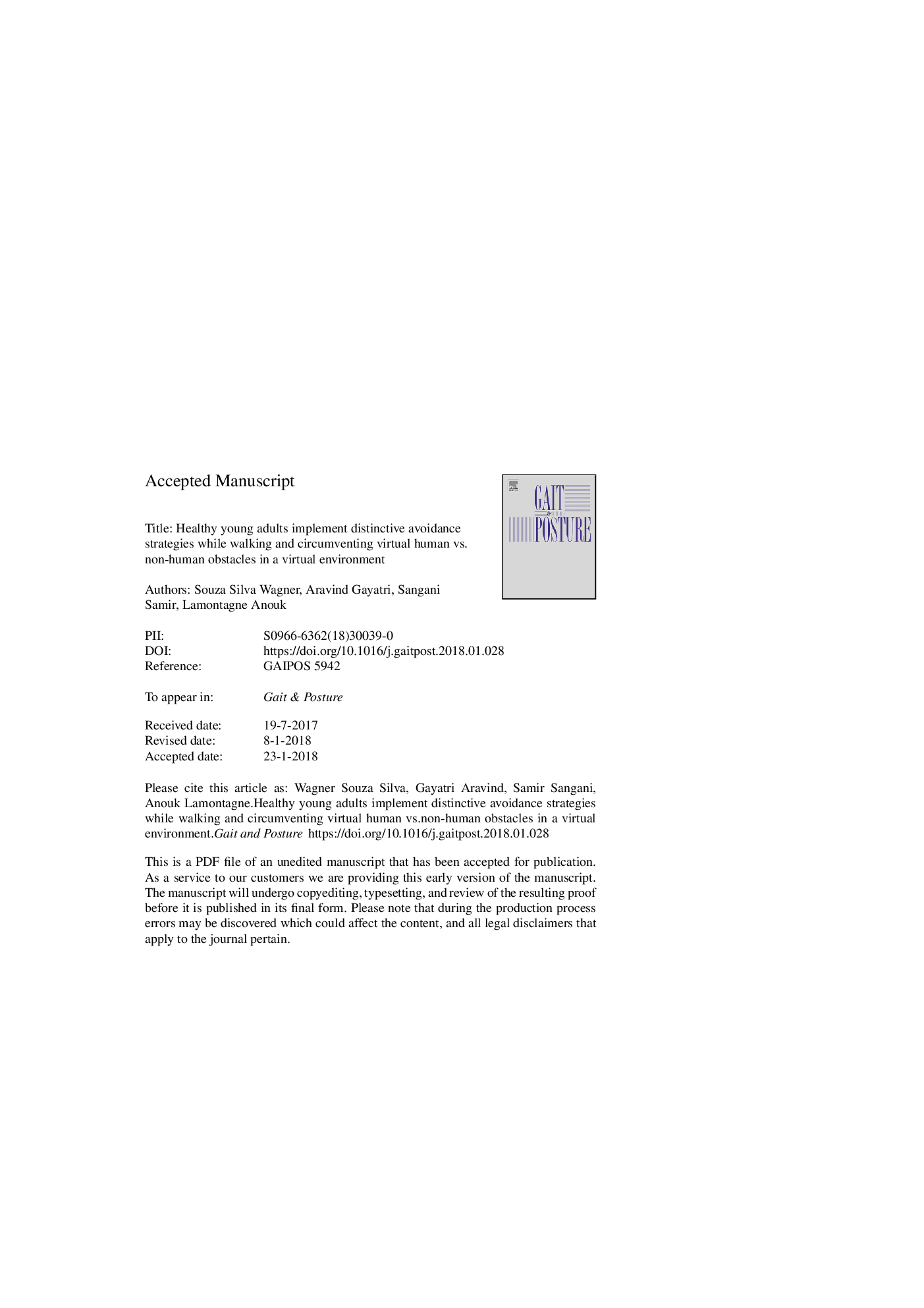| Article ID | Journal | Published Year | Pages | File Type |
|---|---|---|---|---|
| 8798537 | Gait & Posture | 2018 | 22 Pages |
Abstract
This study examines how three types of obstacles (cylinder, virtual human and virtual human with footstep sounds) affect circumvention strategies of healthy young adults. Sixteen participants aged 25.2â¯Â±â¯2.5â¯years (meanâ¯Â±â¯1SD) were tested while walking overground and viewing a virtual room through a helmet mounted display. As participants walked towards a stationary target in the far space, they avoided an obstacle (cylinder or virtual human) approaching either from the right (+40°), left (â40°) or head-on (0°). Obstacle avoidance strategies were characterized using the position and orientation of the head. Repeated mixed model analysis showed smaller minimal distances (pâ¯=â¯0.007) while avoiding virtual humans as compared to cylinders. Footstep sounds added to virtual humans did not modify (pâ¯=â¯0.2) minimal distances compared to when no sound was provided. Onset times of avoidance strategies were similar across conditions (pâ¯=â¯0.06). Results indicate that the nature of the obstacle (human-like vs. non-human object) matters and can modify avoidance strategies. Smaller obstacle clearances in response to virtual humans may reflect the use of a less conservative avoidance strategy, due to a resemblance of obstacles to pedestrians and a recall of strategies used in daily locomotion. The lack of influence of footstep sounds supports the fact that obstacle avoidance primarily relies on visual cues and the principle of 'inverse effectiveness' whereby multisensory neurons' response to multimodal stimuli becomes weaker when the unimodal sensory stimulus (vision) is strong. Present findings should be taken into consideration to optimize the ecological validity of VR-based obstacle avoidance paradigms used in research and rehabilitation.
Related Topics
Health Sciences
Medicine and Dentistry
Orthopedics, Sports Medicine and Rehabilitation
Authors
Wagner Souza Silva, Gayatri Aravind, Samir Sangani, Anouk Lamontagne,
